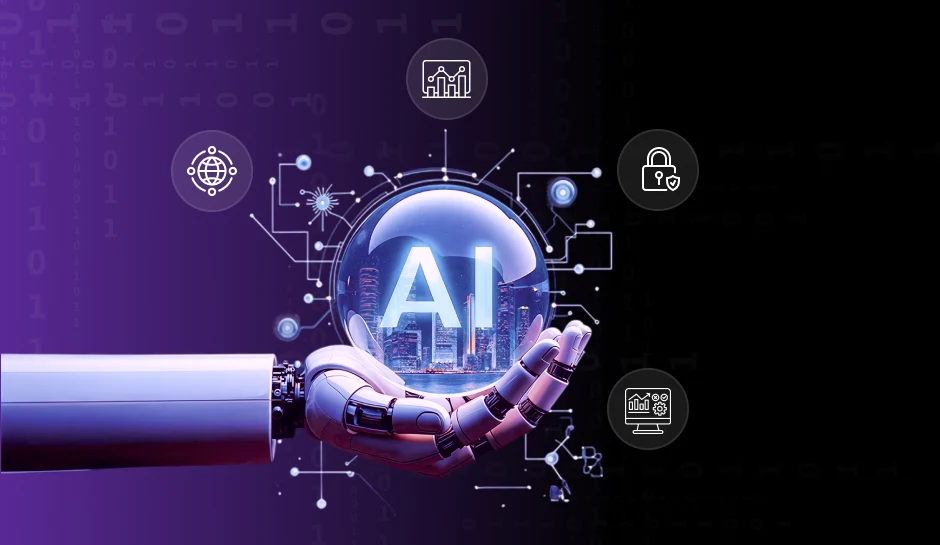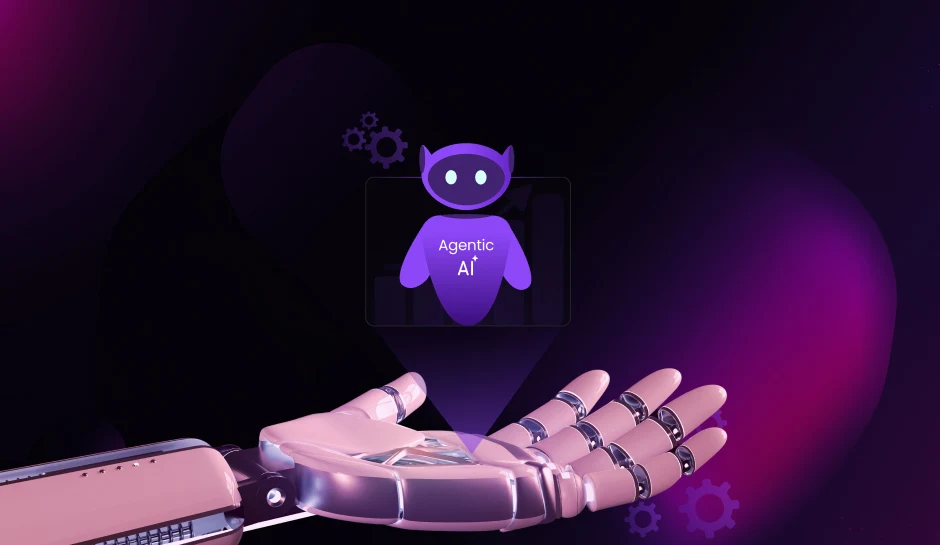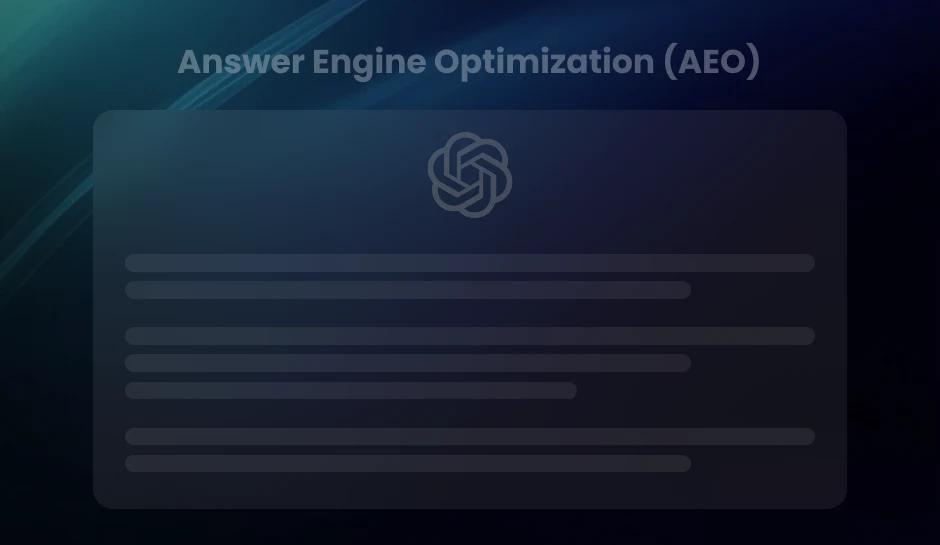Ready to harness the transformative power of AI in your organization? Join Christina Chen, CEO of First AI, as she shares her journey and expert insights on successful AI adoption and inclusive leadership. Discover how to overcome internal resistance, implement practical AI use cases for enhanced productivity, and navigate the evolving AI talent landscape. Gain valuable knowledge on fostering diversity in AI and understanding the exciting future of this game-changing technology.
By tuning in to this episode, you will learn about:
- Navigating the AI Landscape
- AI Tools for Enhanced Productivity
- Future of AI: Trends and Innovations
- Evolution of Search in the AI Era
Featured Speakers:-

Christina Chen
CEO - First AI GroupChristina Chen is a results-driven CEO at First AI Group, dedicated to making Artificial Intelligence accessible across sectors. Her extensive 20+ year tech background, from Microsoft engineering to scaling tech companies, informs her human-centered approach to AI adoption. She advises on strategy, talent development, and innovation, emphasizing practical application for tangible outcomes. Passionate about inclusivity, Christina aims to create pathways to AI opportunities for all, particularly underrepresented individuals.

Harshika Chadha
Lead Product Manager - DiGGrowthHarshika is a seasoned product manager with a passion for business transformation, design thinking, technology, marketing trends, SaaS security, and human-computer interactions. What interests her most is the intersection of these fields, which is why she stays on top of the latest industry insights to uncover strategies for success in today's dynamic business landscape.
Links and Resources
- How To Become An AI-Ready Organization
- Breaking Down Barriers: AI Tools and the Democratization of Data Analysis in B2B Marketing
- How AI will EEAT traditional SEO?
Transcription:
0:11:
So hello and welcome to another episode of the revenue-focused marketer where we discuss anything and everything related to marketing as well as data.
0:21:
I’m your usual host, Hershey, and today I have someone incredibly inspiring with me, Christina Chen, who is the CEO of Forest AI Group.
0:30:
Christina has been a trailblazer in enterprise AI adoption and a strong advocate for Inclusive tech leadership.
0:37:
With over 2 decades in technology and computer science background from the University of Cambridge.
0:43:
She’s driving real impact, where AI meets people.
0:47:
She’s also deeply passionate about ensuring women have a strong voice in the AI space and that’s something I have immense respect for.
0:54:
So thank you so much for tuning in and joining us today, Christina.
0:58:
Well, thank you for having me here, Hashi.
1:00:
It’s truly our pleasure.
1:02:
, for our listeners here today, maybe let’s start with your journey, right?
1:07:
Your journey from studying at Cambridge to leading first AI is incredible.
1:12:
Can you maybe walk us through the path and what kind of inspired you to start this company?
1:17:
It’s been a jagged journey, I’d say, like everyone’s life journey.
1:21:
I’ve always been passionate about technology.
1:24:
I’m always that geeky child to start with, so that’s the reason why I picked computer science to to study and from there, but also found that comparing to my peers at that time, I was really fascinated about how business works as well.
1:37:
So I did start from a sort of technical position perspective.
1:40:
I did work as a software engineer at Microsoft, but then quite quickly found myself in what I call the business world of.
1:47:
, and really in terms of working, whether from an investment point of view into technology companies, running operations, etc.
1:55:
I just was really passionate about how technology could really be applied in different parts of the world and how companies can grow, tech companies can grow on scale.
2:05:
So in the last sort of from, from more of an individual as a software developer then moved into, , working with.
2:13:
Different businesses, tech businesses, that’s where we spent, , you know, two decades or so.
2:19:
First, AI came about through many different angles, but just to cut the story short, for the AI was when A has been around for a long time, so this is not new.
2:30:
I was involved in machine learning and data science prior prior to this.
2:34:
And when generative AI and the current incarnation, everyone’s Sort of talking about came about, and I thought, well, this is something that is the next frontier within my per se.
2:45:
And what really intrigued me was, looking back, it kind of woke up.
2:48:
I, I always say I built first AI for my younger self, for that young Christina, because part of that is me wanting to see more people like me in the tech industry.
2:58:
And AI, if AI is the next frontier, let’s get more representation.
3:04:
Definitely.
3:05:
Into the industry cause we don’t want people to fall behind yet again, you know, revolution starts, yeah, yeah.
3:13:
Part of the reason why First AI was born from the business side, helping companies to leverage this amazing technology, but the way we do it is training up, upskilling, getting people, young people, especially into this cutting edge field so that they can get the best experience, best learning to do that.
3:34:
And this is a win-win because, you know, it’s more cost effective and more scalable that way as well.
3:39:
And a lot of business.
3:40:
This is are really looking for AI capabilities and this is how kind of the two worlds are to meet.
3:46:
That’s incredible.
3:47:
, I love that, you know, you kind of had that strong foundation and that’s what kind of led your journey to then from like just the technical side to moving into the business side and then starting something that really promotes like adoption for all.
4:02:
, I think it’s a very inclusive idea and I love that, you know, that’s something that you were , kind of heavily partaking in.
4:10:
So let’s kind of talk about like a lot of our listeners are marketers, tech leaders and operators.
4:16:
One question they often ask is like, you know, how do we get our teams to actually use tools like co-pilot?
4:23:
So what does adoption look like in real organizations and we’d love to hear any examples that you might have.
4:30:
Yes.
4:30:
The blockade.
4:31:
of AI adoption is actually humans.
4:34:
That’s one thing we found everywhere.
4:37:
So whether that’s marketing teams, finance teams across the organization, up and down.
4:42:
So it’s about, if you think about some of the use cases, we just came from a meeting with a marketing firm, digital marketing firm, who we sat down with and looked at their processes, mapped out their Business operations, etc.
4:57:
Even just from the first half an hour, an hour of conversations, there were about 3 or 5 use cases that popped up where AI, whether it’s copilot or any kind of AI solutions out there can really help.
5:10:
But one big part of that is, OK, how do we make it really easy for the marketers who are not, you don’t have time to keep up with the AI 24/7, right?
5:21:
How do we make sure that it’s really easy so it change because some of that changes their workflows.
5:27:
This is something that’s a lot harder.
5:29:
People underestimate.
5:30:
So we talk a lot about the innovation.
5:33:
Innovation is outstripping the adoption right now because there are plenty of tools that do magic, almost like magic, right?
5:42:
But when reality hits.
5:44:
Doesn’t quite look like that.
5:45:
Where we’ve seen success because I think that’s what the audience wants.
5:49:
So how do you make it work, right?
5:51:
We have seen success.
5:52:
There are 222 points on a race.
5:54:
One is it’s got to be top down and bottom up.
5:57:
So sometimes it’s one way or the other, right?
6:00:
Quite often an organization, maybe the top CEO said, well, we got to be on AI, right?
6:04:
We’ve got to stay competitive.
6:06:
Everyone go and learn AI and Let’s use it.
6:09:
But a lot needs to come from grassroots is that marketing team or that copywriter that found something so great like actually telling the spread the words among their colleagues.
6:20:
That’s what really drives and this, you know, what one company we work with .
6:26:
Because there was one really enthusiastic, , user of Coha or AI.
6:32:
She was the one that was spreading the word more than anybody else.
6:37:
And as others who got into it, and then that snowball event, there’s a positive domino effect started to happen.
6:44:
So we always talk about this kind of champions network is in your companies, who are your champions.
6:49:
They’re not necessarily the most senior people, but the most enthusiastic about it.
6:53:
So that’s one.
6:54:
Second, this round always about use case.
6:57:
Quite often people feel like it’s really abstract and really black box O AI, you know, what does that mean?
7:02:
But if you can come down to use cases, so I just gave an example a few minutes, , you know, a moment ago about this marketing agency that worked out 3 to 5 examples in the first half an hour conversation.
7:14:
Those are use cases, right?
7:16:
So once they figure out the use case, I’ll give you an example, one of these cases is pitch response, right?
7:22:
How can you use?
7:23:
AI to write pitches faster proposals faster.
7:27:
And if that’s the case, if that’s they really bought into that, so everyone can see the benefits of not only the for the business, but their own personal work and make their life easier.
7:39:
That’s also how you can drive adoptions much more concretely.
7:44:
Go start with the use cases rather than just general, you got to learn AI and use AI.
7:49:
Yeah.
7:49:
No, that’s lovely.
7:50:
I think.
7:51:
times we forget to focus on the reals, like, you know, use cases, and that makes all the difference because you can go as broad as like create your own app.
8:01:
You don’t have any need developers these days.
8:03:
I was experimenting the other day with Relet and I was like amazed to see how prompt I put in Chad GPT created like, you know, a business idea, and I used that and put it in Relate and it created an entire app within like minutes.
8:19:
And It was so crazy to see how fast technology is moving these days and how much you can do with AI, but it’s really important to horn into, like, you know, where in your business do you really want to see more of this change instead of kind of going abroad.
8:35:
I kind of talking about tools, maybe we can discuss what are maybe some of your favorite AI tools that you have experimented with or you have suggested other companies to adopt to.
8:45:
We’re very vendor agnostic, so we can’t play.
8:48:
Yeah, I’m only half joking.
8:50:
So as an organization, we do a lot of work in the copilot state is a co-pilot world to start with and then it, it starts to diverse from there.
9:00:
So why co-pilots start with is because we typically work with mid-size to large corporates.
9:06:
, they are most, most people are using Microsoft PowerPoint, Word, etc.
9:11:
I know a lot of people on Gmail, G Suite as well, but a lot of our, I mean.
9:17:
share is people on Outlook, etc.
9:19:
so all the documents are already in there in the Microsoft ecosystem.
9:24:
So put in AI, when I say AI, I mean co-pilot types of personal assistant type AI in that environment, people find it much safer sure, because you know, that’s where you anyway.
9:35:
#1, number 2 is it’s linked to, it knows your emails, it knows your meetings, it knows its transcripts, it knows the Presentation you’re writing.
9:46:
So it’s all just pulling from all, you know, all the previous ones you need to reference.
9:50:
So it’s a lot, especially think about multi 100 employees in the organization, 100s or thousands, , it suddenly draws on knowledge that, you know, one individual doesn’t even know they exist already in the in the ecosystem in the organization.
10:05:
So that quite often, you know, we just worked with one legal firm that is that has 1300 users.
10:13:
Right, so for them to have everybody be able to quickly write a document referencing all the legal cases out of the 1300 lawyers that are done in the past 10 number of years, etc.
10:27:
and writing that without knowing that those exist and go out and search, but it’s all in there with AI on top of it, that’s hugely powerful.
10:34:
So that’s the starting point, but That’s just personal kind of proactivity, I would say, you know, your day to day general workflows.
10:41:
When it gets more interesting than is the more specific use cases that are bigger, more transformative, that’s cross department.
10:50:
So from a marketing perspective, for example, would be content creation that’s not just me writing about a copy, but how can we have a better marketing strategy?
10:59:
How can we on board our suppliers, or some, you know, marketing firms, for example, always have when I was a project, other freelancers in, right?
11:07:
So we have the core team, but we need, , maybe a videographer at some point and, you know, every time or event planner, etc.
11:14:
and they’re quite often they’re freelance.
11:16:
How can we make that more efficient?
11:17:
So they’re always, you know, brought up to speed immediately rather than our team having to brief them all the time.
11:23:
Yeah, you know, every time they, they come on new projects.
11:27:
So these kind of more departmental information would then be more custom, that’s not just co-pilot, you can use OpenAI so Chat GBT there’s a lot for clothes, has a lot of very interesting more sort of reasoning and technical type, , custom build work.
11:45:
Off the shelf marketing solutions, there’s plenty out there, Jasper, , I’m sure you know more that people can use just the right content faster.
11:57:
Yeah, no, definitely there’s so much out there and like, you know, like you said, it really depends on your specific use case, but it also helps to like, you know, start off with.
12:07:
Maybe something like a co-pilot where you can really get those like foundation elements for yourself and increase your productivity and having that integration be so smooth because you’ve been using that product, everything is stored in there that makes a huge point for transition, but then obviously with the time that you save, now you have time to kind of explore these other.
12:30:
, technologies also in explore use cases where you can make things smoother and more efficient.
12:36:
So yeah, that’s really great.
12:38:
I think one of the other sides that I’m trying to understand is like, you know, you advise multiple companies on AI and talent.
12:45:
What shifts are you seeing in the AI talent space, both in terms of hiring and upskilling?
12:51:
Hm.
12:53:
So in terms of work for, so I think last year there was a conversation when generative AI first came about, there’s a lot of AI anxiety, where am I going to lose my jobs, etc.
13:04:
I think that wave has moved on, has evolved and a lot of people.
13:09:
People are comfortable with, have better understanding that it’s not AI taking my job, but how can I use it better as a tool for me.
13:17:
Where I think a lot of conversation these days is more about AI fatigue and ambiguity is the, is everyone and everybody is talking about AI.
13:27:
It’s just too much, but at the same time, it’s so much noise.
13:30:
Again, coming back to the use case, and coming back to what how do I look for team members.
13:36:
Or how do I upskill my my current work force to spot these use cases and to be AIs savvy to some AI ready, AI savvy to some extent, right?
13:47:
And yeah.
13:48:
So when we work with more front running, , more cutting edge companies, they are thinking more advanced in terms of AI.
13:55:
It’s almost a ladder, right?
13:56:
So there are, if you look at across the entire work of force, there will always be ones that are working on AI.
14:03:
So these are.
14:04:
The machine learning engineers and data scientists, etc.
14:07:
they’re ones that then they are so working with AI, so working on AI and working with AI, so they may be using the co-pilot, off the shelf tools, etc.
14:17:
Those, those two different tiers, how can you get and then the ones who may not be using it at all yet.
14:24:
So how can you get everyone to a stand where you know they, everyone’s AI powered using AI to some extent, but only a select.
14:31:
Group in technical organization or department, etc.
14:34:
they are, you know, the machine learning engineers, data scientists, and that’s good that way.
14:39:
So for example, we were speaking with a firm yesterday where they’re thinking about how when the new hiring, the job description doesn’t mean that having AI literacy to some ways not even, you know, advanced stage literacy is a requirement or bonus now.
14:59:
for any hiring, not just technical hiring for marketing, you know, different, you know, finance and all that, and that’s starting, we’re starting to see that shift in the market.
15:10:
Yeah, no, definitely.
15:11:
Let’s dive here a little bit into talking about diversity.
15:15:
I know you’re a big voice for representation in AI.
15:19:
So what are changes that you kind of really want to see and how can companies build more AI Inclusive AI teams.
15:28:
It’s a hard nut to crack because diversity comes way upstream.
15:33:
Do you even have or anyone have the right hand source, candidate source to to hire the right representation and it goes up to education, early education, etc.
15:44:
But if we’re talking about sort of companies or business stages, I think one of the key points to realize for everyone is you don’t have to have a PhD to be an AI.
15:55:
It doesn’t have a certain kind of persona or a stereotypical time and again, because everyone needs to be more and more ASavy AI powered.
16:04:
In fact, there are a lot of people who say from a marketing background are now in AI but with their marketing specialization.
16:13:
And that’s still what we want to see.
16:15:
Why is the representations is also about use cases again how AI because every time we use AI is also feeding back to, you know, where this direction is going, right?
16:26:
Yeah.
16:26:
People’s different perspective it’s not, it’s not about how everyone looks, it’s about how everyone thinks.
16:31:
If you have a perspective, diversity in perspectives rather than diversity in looks, that’s more, more, it drives more business benefits.
16:41:
So sometimes the diversity in DEI initiatives gets a bad rap because it’s, you know, certain, we want certain groups of of .
16:49:
Individuals, it’s not about that at all.
16:52:
It’s about do they think differently.
16:54:
It’s about, do they bring different skill sets but coming, but all coming, becoming AI powers, because how you use, how you write a prompt in co-pilot versus how I write a prompt and how I use AI will be different.
17:07:
And that’s the results coming out of it.
17:10:
And that is a key piece for people to realize.
17:13:
And then, , with that mindset, you can start to see your candidate pool differently.
17:19:
Definitely, and I mean, we’ve talked about a lot about where AI is at presently.
17:25:
I do want to take a dive into kind of seeing, like, you know, looking ahead into the future.
17:30:
What trends in AI adoption or enterprise use case are you most excited about?
17:36:
Mhm.
17:37:
I’d love to get your thoughts on that.
17:39:
I wouldn’t be the first to say, I mean, it’s all about agent these days.
17:42:
AI agent AI, you know, whether the definition, the definition of agent, right?
17:49:
So, but really.
17:51:
It is, if you think about that ladder we talked about early on, first start with the personal productivity, then go on to more departmental, then go on to more organizational transformation with AI almost like a pyramid.
18:04:
Think about the base layers, it’s each, each worker and going up.
18:08:
The future of some of the front runners are have already looked at.
18:12:
At personality, there’s still room to improve, don’t get me wrong, but really the bigger impacts come from the departmental and the whole organization transformation that quite often are more use of genic AI rather than , well, mostly identic AIs will will have the biggest impact.
18:32:
Definitely, I think.
18:33:
It’s very exciting to kind of see the shift from generative AI being the center and focus of discussion and topics to now, you know, it becoming all about agentic AI.
18:43:
I think a lot of key players like Salesforce have a lot to also do with and creating the hype about it and like, you know, giving people what they really need to get to the next step.
18:53:
Hm.
18:55:
I guess, like, you know, on a more personal note, like, you know, what excites you most about the future of work powered by AI?
19:02:
What most excites me about the future of AI is we don’t know what’s gonna come with it.
19:08:
I think everybody, right, you know, it is changing so fast.
19:12:
What I think I saw some of the more almost autonomous, you know, getting towards more and more autonomous, , AI agents, you know, some of the computer use launched by Cloud a few months back, etc.
19:24:
dropic rather a few months back.
19:26:
That’s really interesting because you can start to visualize it or you can start to play around with it.
19:31:
A lot of people are.
19:32:
Yeah.
19:33:
To your point, I think we were having a chat earlier that you can build an app from the get go, but from plain English, I think that breaks down a lot of the technical barriers.
19:42:
Oh, definitely.
19:43:
Yeah.
19:44:
And that’s I think where it gets so interesting when Chat GBT first came about, that’s also what.
19:50:
The reason why I was so successful is because everybody, you and me can all use it.
19:57:
That was the first time everyone had their hands on AI beyond the machine learning engineers, they are scientists in such a trivial way, agents, but also when it first came about, is a personal assistant, really, you know, ask questions and generate content, etc.
20:13:
Now fast forward to the identity, we just talks about if that can also suddenly be exposed to average people like you.
20:20:
Me, to build agents to write code, etc.
20:24:
That’s where I see the most excitement.
20:27:
I’m personally most excited about.
20:29:
Yeah, no, definitely.
20:30:
It’s exciting to really see.
20:33:
Like I think the unpredictability of it is definitely exciting and how much more that you can do from it.
20:40:
A lot of what I’ve been seeing also is a shift maybe in how we search, right?
20:45:
A lot of us used to just Google it before, like Google used to be, you know.
20:50:
Our go to spot, but a lot of now the shift’s becoming like, let me ask and like, you know, get the answers because we’re not looking for 20,000 results anymore.
21:02:
A lot of what what we really want is this is what I’m thinking, this is what I like, you know, a question sort of answer to that specific question that you need.
21:11:
, so do you think that’s really like an impact Google and like search, like what do you kind of see predict for the future of search with AI.
21:20:
Yes, there is a big, , topic, , emerging topic around how SEO is going to be impacted, right?
21:27:
How do you write SEO content in the AI age?
21:31:
Or do you write SEO content for the AIIH, right?
21:35:
So there’s definitely, I mean search is here to stay.
21:38:
I don’t see us stopping to use search, but people are going to use it differently.
21:43:
Even Google itself, right, has the AI also so, so you don’t need to go to a different place to do so.
21:50:
Still the same content, like having good content is still king, right?
21:54:
And, and having good data analytics is still king for businesses, you know, if you know data, if you know if you have content, you have to have data, that’s going to be gold for within any kind of environments whether that’s AI chat GBT way of getting answers versus the Google.
22:14:
Search way of getting answers.
22:16:
No, definitely.
22:16:
I think the EEAT factors that people kind of talk about within SCO are huge still, right?
22:23:
Like you want to be able to get the trust and you want to be able to build that authority for the content that you’re writing.
22:31:
So I think I agree that, you know, searches, if it’s still around, a lot of it is going to change and the recommendations.
22:38:
That Google even pops out now, kind of depends on like how much trust you’re building, who’s the person giving this answer, right?
22:46:
And it makes all the difference.
22:47:
So I think certain foundations about content will definitely be important and will stay, but it’ll be definitely an interesting time to see, like, you know, how that evolves also.
22:59:
I know we’re kind of coming towards the end of our session.
23:03:
here today, you kind of talked about, you know, marketing analytics.
23:07:
A lot of what we are aiming and we’re trying to do at the growth is also making like marketing analytics easy for laymen.
23:16:
You don’t need any marketer can now be able to access reports that they need.
23:21:
Imagine Chad GPT, but we call it Diggy GPT here and it’s like a very similar, you know.
23:27:
You know, performance, you ask anything about your analytics, and it’s able to pull reports for you.
23:32:
It’s able to give you exact answers that you need.
23:35:
So if you know, you’re having meetings with the higher ups, you don’t need to sit with a data engineer anymore or a data scientist to pull like certain or create certain reports for you.
23:45:
It’s all done and you can easily fetch them now.
23:48:
So, you know, a lot of effort, I think is going in that direction.
23:52:
, to kind of give people what they need instantly without kind of having that like lack of technical knowledge, if you might say.
24:01:
Yes, definitely.
24:02:
We see that every and almost all the projects that AI or co-pilot is making data more consumable to non-technical people.
24:12:
Yeah.
24:13:
Two different functions, right?
24:15:
So marketing is a classic example we see often, yes, you no longer need to build a data engineer or sort of a Power BI or Tableau to developer to do XYZ and you can like query, ask questions to addressing that in different functions, you know, HR again, these are not technical individuals and they don’t need to be asked plain English.
24:38:
Yeah, and it’s so interesting to see like AI is now touching every industry, right?
24:44:
We’re talking not just in business, but even outside of that, like every aspect of what we see right now, somewhere it’s being enhanced and the experience is getting faster and better because of it.
24:56:
So I think it’s great to see, like, you know, how far we’ve come and the future is definitely, I would say exciting too.
25:04:
, because you know, this has been such a thoughtful and energizing conversation.
25:09:
Before we wrap up, any last piece of advice for people that are still trying to adopt AI and, you know, are maybe part of small and medium sized businesses trying to implement or find ways to adopt AI.
25:21:
I would say, jump in ways and so if you figure if you’re wondering how, start with one use case.
25:28:
Start with a simple use case and see where that goes and ideas will come.
25:32:
Definitely.
25:33:
And for people that kind of want to learn more about you and more about the work and first they are, where can they, you know, find you?
25:40:
LinkedIn, we have lots of really interesting insights as well as we run regular webinars about AI and especially because of the work we do is Implementing and helping businesses adopt AI on the grassroot level, on the ground level.
26:00:
There are lots of use cases we get to see and we get to share that.
26:03:
And so if you want, if you’re looking for ideas of just what are people using AI for?
26:10:
What competitive, what are people in my industry doing first AI.
26:13:
LinkedIn is a good place.
26:15:
Awesome.
26:15:
Thank you so much for sharing that and for being here today.
26:19:
This has again been an incredible conversation.
26:23:
, and as always, thank you to all our listeners for tuning in.
26:27:
, if you enjoyed this episode, do let us know your thoughts and we’ll catch you at our next one.
26:33:
So thank you so much.
26:35:
Thank you for having me and thank you for listening.




